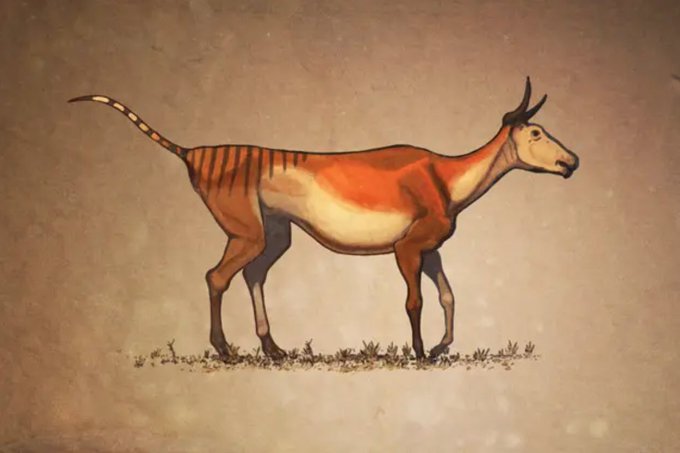Happy #WorldFrogDay! Can you believe this frog is ~40 million years old? In 1873 the French naturalist Henri Filhol described this fossil frog discovered from the Quercy Phosphorites of southwestern France. The specimen preserved the frog's soft tissues as an external cast. (1/3)
New studies show baboons, zebras and cows once looked more like dinosaurs.
… Just kidding! #AprilFools
But in all seriousness, these terrifying drawings by Paleoartists @cmkosemen and @thejohnconway are making a point… 🧵
It's #WorldSparrowDay! This day is about raising awareness for House Sparrows (Passer domesticus). Due to human introductions, the House Sparrow is the most widely distributed wild bird on the planet.
Who doesn't love stickers? Especially Eons stickers??
Get your sticker pack here: https://t.co/4petC2wcnz #NationalStickerDay
Happy #BlackBearDay! The earliest fossils of Ursus americanus are from the early Pleistocene (Irvingtonian). Researchers think they arrived in North America during a dispersal event from Eurasia. By the late Pleistocene (Rancholabrean) they were widespread.
For #InternationalPolarBearDay, let's admire the oldest polar bear (Ursus maritimus) fossil known - a 130,000 - 110,000 year old left mandible discovered in 2004 from Svalbard, Norway.
It's #InternationalSnowLeopardDay! Let's check out one of the oldest big cat fossils known - this skull from Panthera blytheae, an early extinct big cat.
This fossil was found in the Tibetan Himalaya Range and is estimated to be from the Late Miocene–Early Pliocene (~6 MYA)!
















